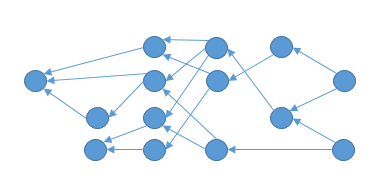My understanding comes from the ByteBall white paper different from IOTA. This technology is experimental, has not yet been proven for reliability, security and scalability but I think it is worth exploring.
In the blockchain, each block is bound by the previous / next one requiring a complete reading of the blockchain.
In the Byteball DAG, it seems that the id, serving as an index, is linked by child / parent not requiring a complete reading of the database but simply the index which could be in "relation" with a other databases or tables.
Hedera Hashgraph is a project, Byteball has a currency, is operational and announces a distributed ledger.
Will there be other alternatives soon?
Mathematically speaking, the blockchain is a DAG - just a very simple one

(blockchain depicted as a DAG)
A more generic DAG looks like this:

So yes, of course it is worth exploring and it's being explored by many projects.
But the "difference" you spot is not one. Depending on what you want to do or search for, it is actually much more complex to search a generic, unconstrained DAG than a much simplified and streamlined one that is better known as a "blockchain"
You can do a lot of things with a DAG. Back in 2002, I implemented a kNN search algorithm on a DAG that was an ontology of the medical domain: each "node" of the graph was not containing a "state" of the state machine like in cryptocurrency projects but instead was a concept from the medical domain such as for instance "illness" or "leg". The "child-parent" relationships that were linking the nodes of the graph were not transactions nor hashes of the previous "state snapshot" but ontological relationships such as "isPartOf" or "isSubclassOf"
That shows the versatility of DAGs
However one thing I'm skeptical about is the ability of "multidimensional DAGs" (non-blockchain DAGs) to implement a ledger. Maybe there are solutions, but they are not readily apparent